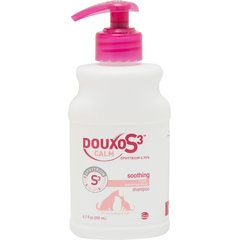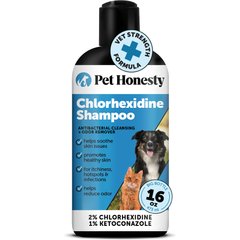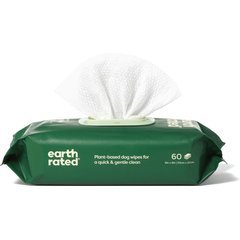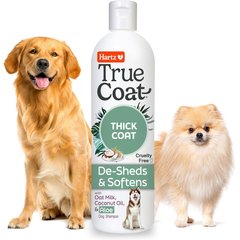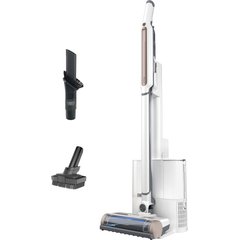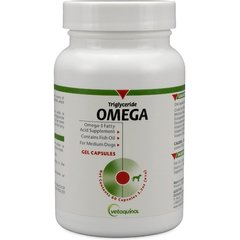What Are Seasonal Allergies in Dogs? What Are the Signs?

Photo by Chewy
Can dogs have seasonal allergies in the same way people do? Absolutely! Just like us, dogs can react to pollen, mold, and other environmental allergens, turning a fun day outdoors into an itchy ordeal. If your pup seems extra itchy or sneezy during certain times of the year, seasonal allergies in dogs could be to blame.
We spoke to two veterinarians to learn the telltale signs of seasonal allergies in dogs and how you can help your canine companion feel better.
What Are Seasonal Allergies in Dogs?
Seasonal allergies in dogs occur when their immune system overreacts to environmental allergens, such as pollen, mold spores, dust mites, or grass.
These allergies primarily affect the skin, causing irritation and inflammation—a condition known as atopic dermatitis.
How Common Are Seasonal Allergies in Dogs?
Seasonal allergies are relatively common, affecting up to 30% of the canine population.
And while any dog can develop allergies, Thomas Edling, DVM, MSpVM, MPH, chief veterinary officer and animal ethicist for the American Humane Society, says certain breeds and genetic lines are more prone to the condition due to inherited skin sensitivities.
Some of the most commonly affected dog breeds include:
- American Pit Bull Terrier
- Boston Terrier
- Boxer
- Bulldog
- Chinese Shar-Pei
- Golden Retriever
- Jack Russell Terrier
- Labrador Retriever
- Shih Tzu
- Soft-Coated Wheaten Terrier
- Weimaraner
- West Highland White Terrier
- Certain mixed-breed dogs, such as the “doodle” crossbreeds
When Do Seasonal Allergies Take Place?
Seasonal allergies in dogs are more likely to occur during certain the times of the year when seasons are changing: in spring (March to May) and fall (September to November).
However, timing can vary based on location and when specific allergens such as pollen or mold are most active. In warmer climates, “seasonal” allergies may be noticeable year-round.
What Are the Signs of Seasonal Allergies in Dogs?
Most dogs with seasonal allergies begin showing symptoms between 6 months and 3 years of age, says Dr. Edling.
While the signs can vary from dog to dog, common symptoms of seasonal allergies in dogs include:
- Excessive scratching, licking, or chewing at the skin
- Red, inflamed, or irritated skin (especially around the paws, belly, and ears)
- Frequent ear infections or head shaking
- Watery eyes or excessive tearing
- Sneezing or runny nose
- Scooting or rubbing against furniture due to itchy skin
- Hot spots or skin infections from excessive scratching
And while rare, seasonal allergens can sometimes trigger a life-threatening anaphylactic reaction, says Catriona D’Aulerio, BVetMed, CertAVP, medical director at Veterinary Emergency Group in San Jose, California.
What Causes Seasonal Allergies in Dogs?
Dogs with seasonal allergies have a defective outer skin layer (epidermis), Dr. Edling says.
“When allergens contact the skin, the immune system creates an inflammatory response, resulting in the signs of itchiness we see in affected dogs,” he explains.
The most common triggers for seasonal allergies include:
- Grass pollen
- Tree pollen
- Weed pollen
- Molds and yeasts
- Dander (skin cells)
- Dust mites and storage mites
How Do Veterinarians Treat Seasonal Allergies in Dogs?
If your dog is excessively scratching, licking, or showing signs of skin irritation that flare up during certain times of the year, it’s time to visit the vet.
Veterinarians diagnose seasonal allergies in dogs based on:
- Physical exam findings
- Symptoms
- A history of recurring clinical signs consistent with allergic reaction during the same seasons each year
To confirm the diagnosis, your vet will also rule out conditions that produce similar symptoms, such as skin infections, flea allergies, or food allergies.
Once your dog is diagnosed, your vet might recommend a combination of treatments to help manage symptoms, including:
- Antihistamines: Antihistamines, such as diphenhydramine (Benadryl) or cetirizine (Zyrtec), might help mild cases, though they’re not effective for all dogs.
- Anti-itch medications: Medications such as Apoquel and Cytopoint can alleviate current itchiness and prevent flare-ups.
- Steroids: Steroids such as prednisone can be used short-term for severe flare-ups but aren’t ideal for long-term use due to side effects.
- Anti-itch shampoos: Regular bathing with an anti-itch shampoo, such as Douxo S3 Calm Shampoo or Pet Honesty Chlorhexidine Shampoo, can help remove allergens from the skin and provide relief.
- Allergen immunotherapy: For dogs with severe or persistent allergies, your vet might recommend immunotherapy. This involves giving small doses of allergens through injections or oral drops to desensitize the immune system over time.
- Antibiotics/anti-fungals: If your dog has developed a bacterial skin infection from excessive chewing and licking, antibiotics might be necessary, says Dr. D’Aulerio. Anti-fungal treatments may also be necessary for dogs who develop secondary yeast infections.
Recommended Products
How Can I Help Prevent or Reduce Seasonal Allergies in My Dog?
While you can’t prevent seasonal allergies in dogs, as they’re primarily genetic, there are several steps you can take to minimize your pup’s exposure to allergens, thereby reducing their symptoms.
Here’s how you can help:
- Wipe down your dog after outdoor time. Pollen and other allergens can cling to your dog’s fur and paws after they’ve been outside. Dr. D’Aulerio suggests using pet-safe wipes, such as Earth Rated Dog Wipes, or a damp cloth to gently clean your dog’s paws, belly, face, and coat before they come inside.
- Give regular baths with hypoallergenic shampoo. Bathing your dog once or twice a week with a gentle shampoo, such as Earthbath Hypo-Allergenic Shampoo or DermAllay Oatmeal Shampoo, can help remove allergens from their skin and coat, providing much-needed relief. Avoid overbathing, though, as it can dry out your pup’s skin.
- Keep indoor air clean. Use HEPA air purifiers and regularly change HVAC filters to help reduce airborne allergens inside your home. Keeping windows closed during high-pollen seasons can also help minimize exposure.
- Wash bedding and toys frequently. Allergens can accumulate on your dog’s bed, blankets, and favorite plush toys. Wash these items weekly in hot water to remove pollen, dust, and dander.
- Vacuum and dust regularly. Frequent vacuuming, especially in areas where your dog spends a lot of time, helps remove allergens from carpets, rugs, and upholstery. Use a vacuum with a HEPA filter for the best results.
- Adjust walks based on allergens. Try to walk your dog early in the morning or late at night, when pollen counts are lower. Dr. D’Aulerio also recommends steering clear of outdoor areas with plants that you know trigger your pet’s allergies.
- Give an omega-3 (fish oil) supplement. Studies have shown that fish oil supplements, such as those from Welactin or Vetoquinol, can help reduce inflammation associated with skin allergies and help skin cells maintain a strong barrier against allergens.
Recommended Products
FAQs About Seasonal Allergies in Dogs
Q: When is allergy season for dogs?
A: Dogs with seasonal allergies are most likely to experience symptoms in the spring (March to May) and fall (September to November), though this can vary depending on climate, weather patterns, and geographic location.
Q: What can I give my dog for allergies?
A: There are several options to help relieve allergy symptoms, including antihistamines; oral or injectable medications, such as Apoquel or Cytopoint; and omega-3 supplements.
Always check with your vet before giving your dog any medication.
Q: Is Zyrtec or Benadryl better for dogs?
A: There’s no clear evidence that one antihistamine is more effective than another.
Zyrtec is often a preferred option among veterinarians, because it tends to cause less drowsiness than Benadryl and needs to be given only once every 24 hours, compared to Benadryl’s 12-hour dosing schedule. Always check with your vet before giving your dog any medication.
Q: What are effective home remedies for seasonal allergies in dogs?
A: While home remedies won’t eliminate seasonal allergies in dogs, they can help ease symptoms and reduce allergen exposure.
Wiping down your dog after outdoor play, bathing them regularly, and reducing allergens in your home can help.
Additionally, incorporating omega-3 fatty acids into their diet might help strengthen their skin barrier and reduce inflammation.


